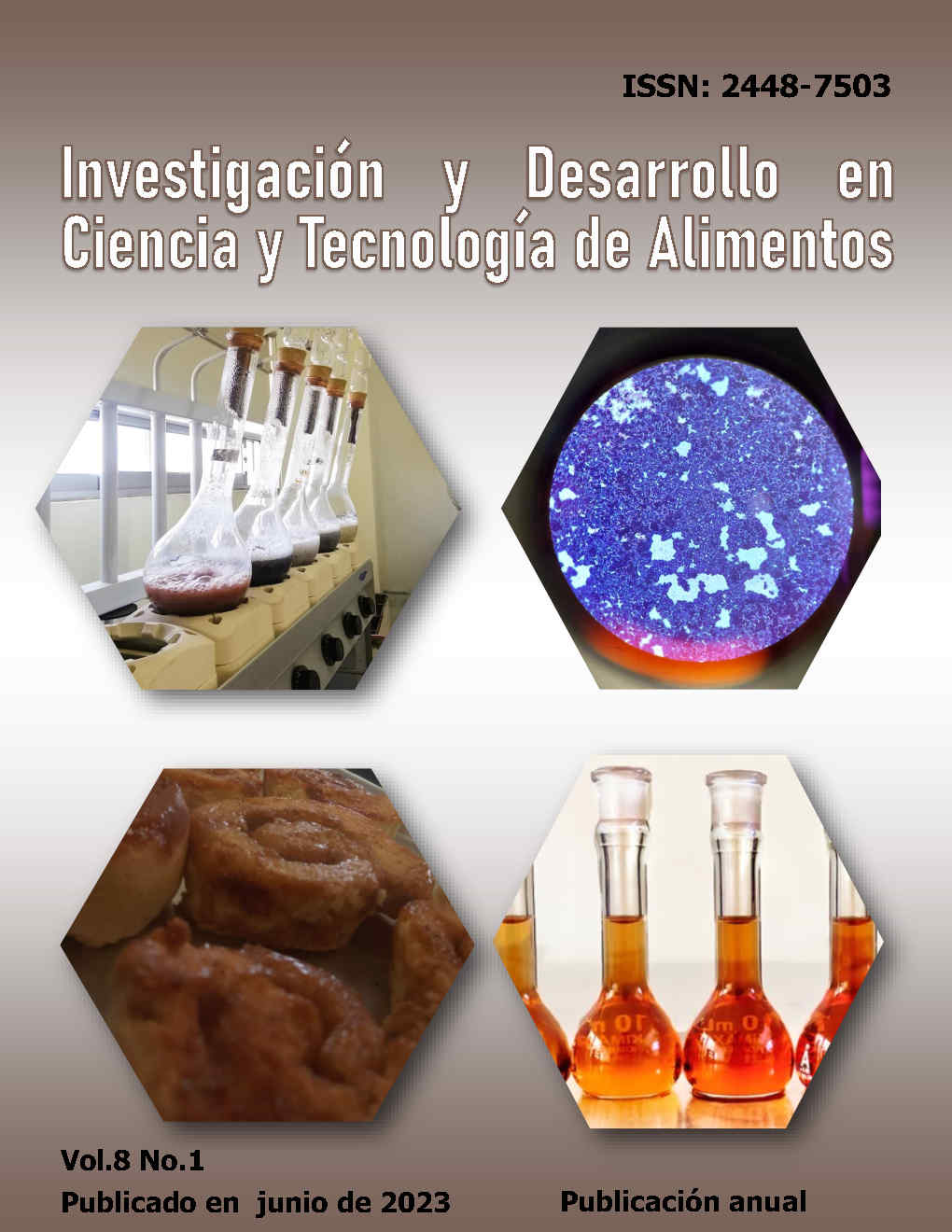Diseño de pretratamientos antioxidantes para el secado de cascara de plátano con infrarrojo y aire caliente
DOI:
https://doi.org/10.29105/idcyta.v8i1.106Keywords:
Peel, banana, antioxidants, drying, infraredAbstract
The use of agro-industrial by-products such as banana peel is limited by the oxidation of its components, even when emerging technologies are used for product development. The objective was to design an antioxidant pretreatment using the response surface methodology and to dry the shell with hot and infrared air. A Box-behnken design with MiniTab19 was used to establish the concentrations of citric acid, ascorbic acid, and sodium bisulfite according to the limits established by COFEPRIS. The color vector was evaluated with the CIELAB scale. Subsequently, the results were analyzed to optimize the response variable and obtain some flour with maximum luminosity. The optimized concentrations of the additives were applied as pretreatment to drying. According to the results, the best fit model is of the quadratic type with an R2 of 93.8%. The optimum concentrations of the additives were 0.165% citric acid, 0.19% sodium bisulfite and 0.25% ascorbic acid. Likewise, a brighter flour was obtained using infrared drying. In conclusion, a pretreatment with the least number of additives was designed to obtain oxidation-stable plantain peel flour.
Downloads
References
Angulo, P., Díaz, D., Espinoza, J., Fernández, V., Figueroa, M., y Galarza, A. (2001). Implicaciones farmacológicas y toxicológicas del óxido nítrico en la inflamación intestinal II: enteritis inducida por AINES como modelo experimental para el científico de la flora medicinal peruana. Revista de Ciencias Veterinarias, 17(3), 21-26
Carvajal. M., & Murgueitio. F. (2017). Caracterización de las proteínas de la cascara de plátano tipo Williams (Giant Cavendish) (Tesis pregrado). Universidad de Guayaquil, Ecuador.
Oliveira, A., Barros, C., Silva, E., Henriques M., Paes de Barros, M., Marinho, M., & Fonseca, O. (2009). Total Phenolic content and free radical scavenging activities of methanolic extract powders of tropical frutis residues. Food Chemestry, 115, 469-475. DOI: https://doi.org/10.1016/j.foodchem.2008.12.045
Rivera et al., (2018). “Componentes prebióticos del plátano: fibra dietética y almidón resistente” En Revista Iberoamericana de Ciencias,5 (3), pp. 40-50.
Scheffé, H. (1958). Experiment with mixtures. Journal Royal Statistical Society. 20:344 DOI: https://doi.org/10.1111/j.2517-6161.1958.tb00299.x
Vargas y Vargas, M., Figueroa Brito, H., Tamayo Cortez, J., Toledo López, V., & Moo Huchin, V. (2019). Aprovechamiento de cáscaras de frutas: análisis nutricional y compuestos bioactivos. CIENCIA Ergo-Sum, 26(2). doi:10.30878/ces.v26n2a6 DOI: https://doi.org/10.30878/ces.v26n2a6
Downloads
Published
How to Cite
Issue
Section
License
Copyright (c) 2023 Y. Gutiérrez-Aguirre, C. Ozuna-López, Ma. Del R. Abraham-Juárez, M.G.L. Acosta-Castillo, M.A. Rocha-Mendoza, E. Mares-Mares

This work is licensed under a Creative Commons Attribution 4.0 International License.
Los autores/as que publiquen en esta revista aceptan las siguientes condiciones:
a. Los autores/as conservarán sus derechos de autor y garantizarán a la revista el derecho de primera publicación de su obra, el cual estará simultáneamente sujeto a la Licencia Creative Commons Atribución 4.0 Internacional. que permite a terceros compartir la obra siempre que se indique su autor y su primera publicación esta revista.
b. Los autores/as pueden realizar otros acuerdos contractuales independientes y adicionales para la distribución no exclusiva de la versión del artículo publicado en esta revista (p. ej., incluirlo en un repositorio institucional o publicarlo en un libro) siempre que indiquen claramente que el trabajo se publicó por primera vez en esta revista.
c. Se permite y recomienda a los autores/as a publicar su trabajo en Internet (por ejemplo en páginas institucionales o personales) posterior al proceso de revisión y publicación, ya que puede conducir a intercambios productivos y a una mayor y más rápida difusión del trabajo publicado.





